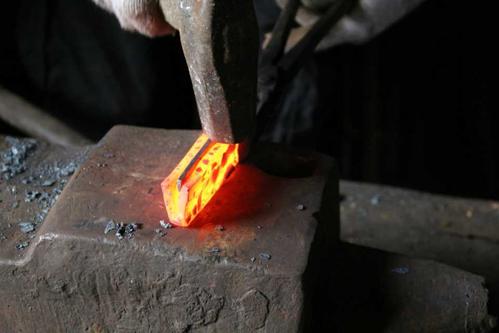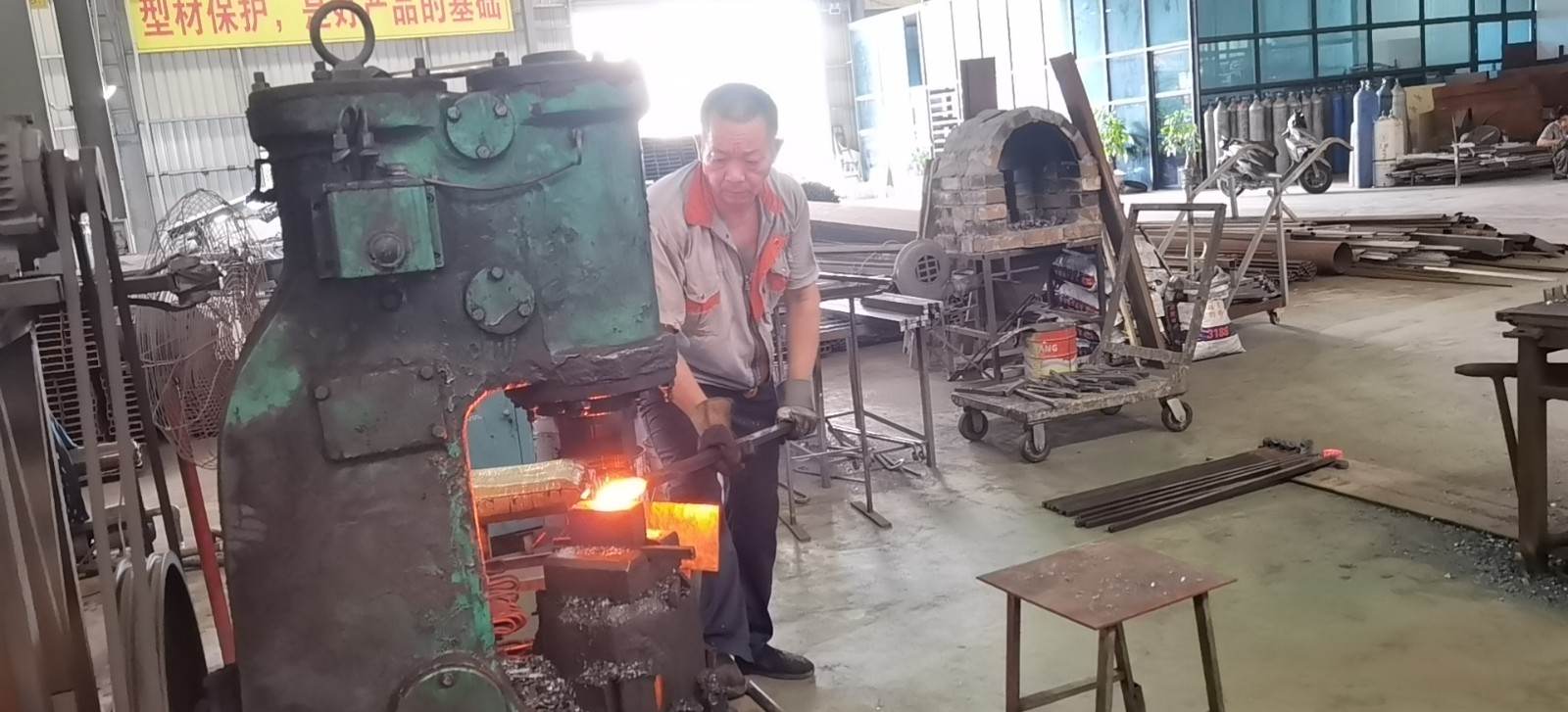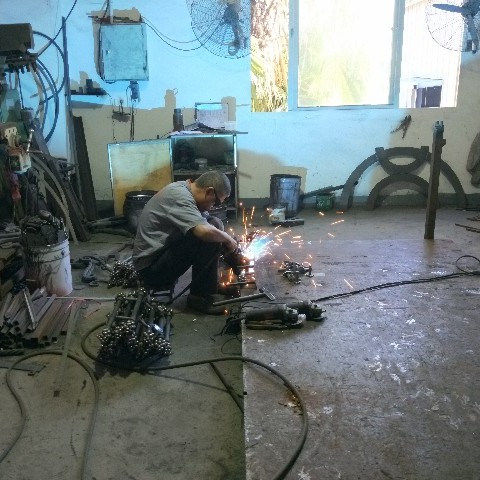Better Touch Better Business
Contact Sales at Gladman Iron Doors
Forging refers to the process of forging or pressing the metal in the red hot state by air hammer or other equipment. To put it bluntly, forging is to soften the metal and form it into designated shape.

Principle
Forging can ensure the continuity of the metal fiber structure, keep the fiber structure consistent with the shape of the forging, making sure that the metal is complete, the structure is dense, and the mechanical performance is good.
Characteristic
The objects processed by forging have high hardness, sharpness and wear resistance, good texture, and good corrosion resistance, which can ensure that the objects have good mechanical properties and a long service life.

Scope of application
Forging is widely used in the processing of aviation, ships, diesel engines, petrochemicals, heavy machinery, and iron products.
Crafting process
1. Ignition: Put the wood into the furnace coal pool to ignite, and load the lump coal. The loading amount of lump coal is generally 0.5 to 0.7 times the weight of the forging.
2. Heating: After the lump coal is ignited, when the furnace temperature rises to about 700℃, keep it warm.
3. Furnace loading: classify and partition the forging blanks into the furnace; load the large material first, then the small material.
4. Heating up: The forging is heated up. When the furnace temperature rises to 1260℃, keep it for 15-30min, and then take the blank for forging.
5. Forging: The general principle of forging is: first forging small pieces, then forging large pieces. The forging process depends on different workpieces, and the specific process is carried out according to the corresponding process card.
6. Back to the furnace: When the forging does not meet the requirements of the forging drawing, and the temperature is lower than the final forging temperature, it must be returned to the furnace and reheated before forging until it meets the requirements.
7. Inspection: After cooling, it must be inspected by quality inspectors before filling out the warehousing list and transferring to the next process
